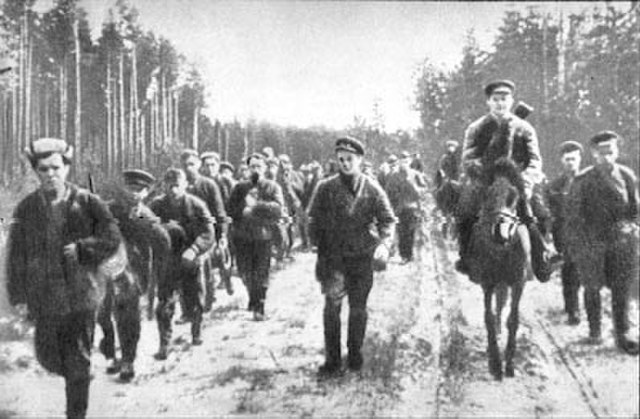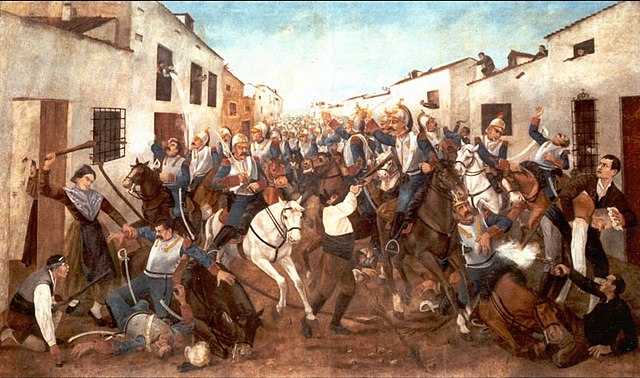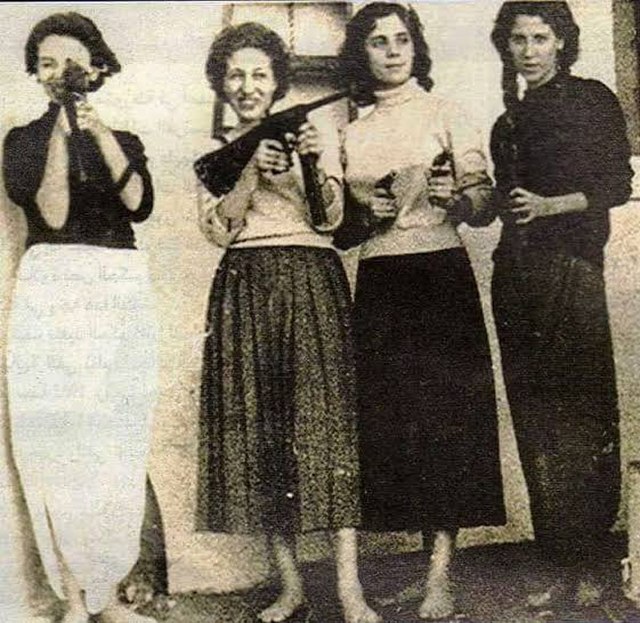Soviet partisans were members of resistance movements that fought a guerrilla war against Axis forces during World War II in the Soviet Union, the previously Soviet-occupied territories of interwar Poland in 1941–45 and eastern Finland. The activity emerged after Nazi Germany's Operation Barbarossa was launched from mid-1941 on. It was coordinated and controlled by the Soviet government and modeled on that of the Red Army.
Execution of alleged partisans by German soldiers, September 1941
German photo showing alleged partisans hanged by the Germans in January 1943
Soviet partisans on the road in Belarus, 1944 counter-offensive
German propaganda photo: interrogation of a Soviet partisan by Wehrmacht Luftwaffe Fallschirmjäger Paratroopers, Russia 1942
Guerrilla warfare is a form of unconventional warfare in which small groups of irregular military, such as rebels, partisans, paramilitary personnel or armed civilians including recruited children, use ambushes, sabotage, terrorism, raids, petty warfare or hit-and-run tactics in a rebellion, in a violent conflict, in a war or in a civil war to fight against regular military, police or rival insurgent forces.
Spanish guerrilla resistance to the Napoleonic French invasion of Spain at the Battle of Valdepeñas
Soviet partisans on the road in Belarus, 1944 counter-offensive
Siege of the Fortaleza San Luis by the Dominican rebels by Melanio Guzmán
Lakhdari, Drif, Bouhired and Bouali. Female Algerian guerillas of the Algerian War of Independence, c. 1956.







